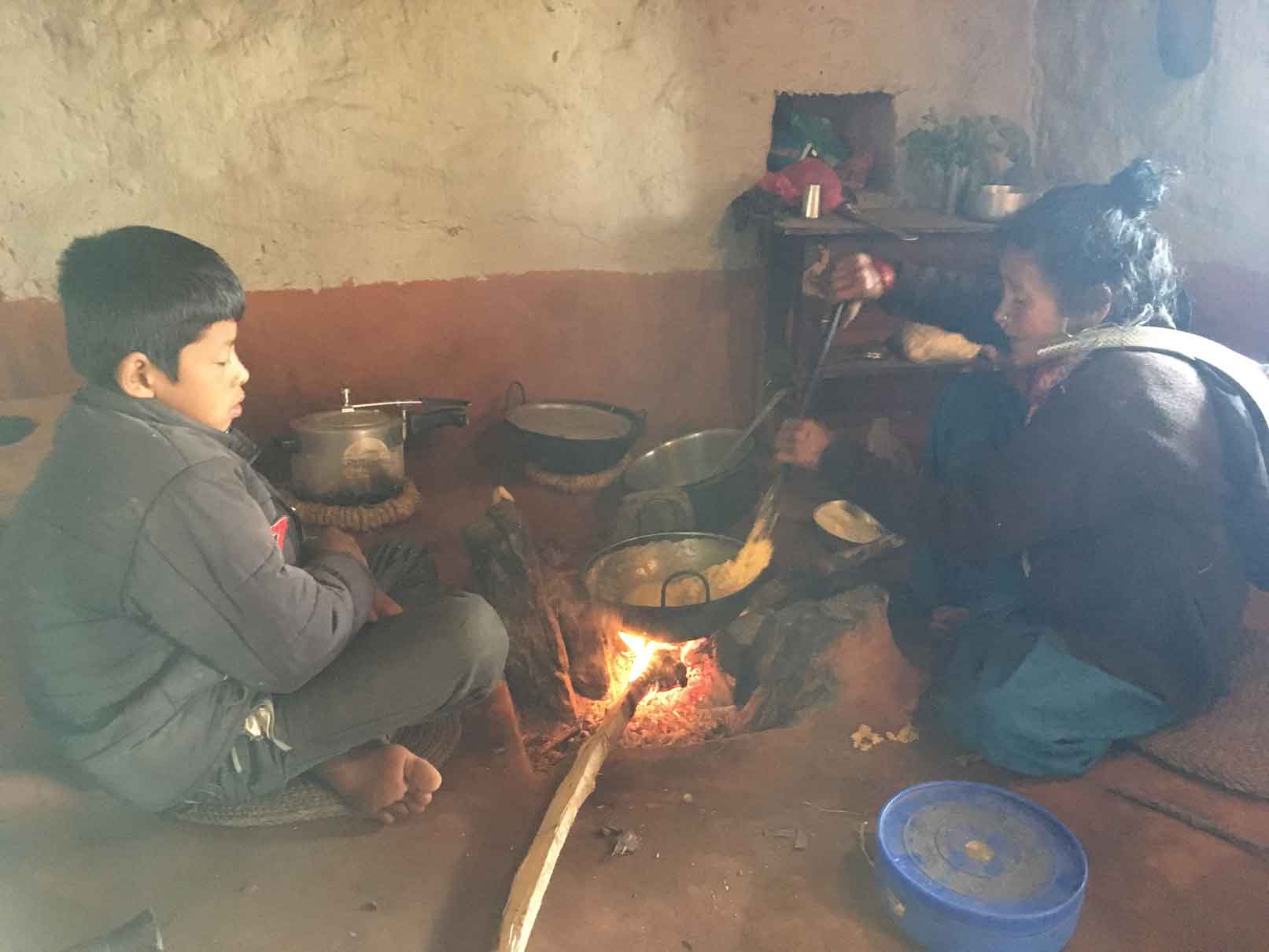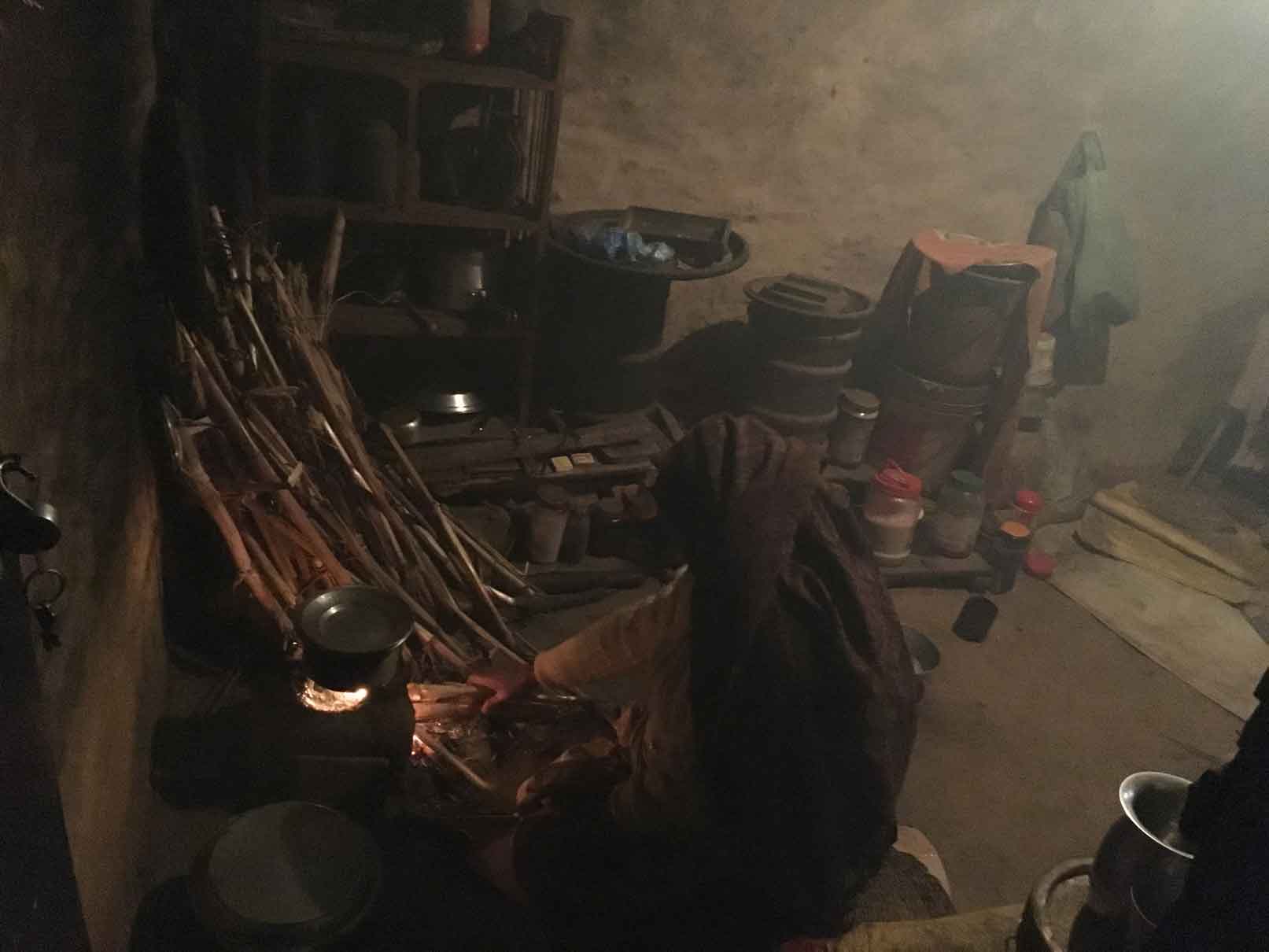Friday, 21 February 2020
Traditional stoves that burn biomass materials, and are widely used in developing nations, have been shown to cause lung inflammation, according to a study from experts at the University of Nottingham.
The research, published in the journal - Annals of the American Thoracic Society, found significantly increased indoor levels of harmful PM2.5 (miniscule atmospheric particulates) and carbon monoxide (CO) where these types of stoves are used. This can stimulate the biological processes that cause lung inflammation and may lead to chronic obstructive pulmonary disease (COPD).
Lung inflammation is a major cause of COPD. More than 90% of deaths from COPD are in low and middle-income countries, and COPD has a high incidence rate in the regions of Nepal studied.
Professor Ian Hall, from the School of Medicine at the University, led the study which looked at the pulmonary effects of traditional cooking stoves (TCS), in comparison with improved, ventilated stoves (ICS) and liquid petroleum gas (LPG) stoves.
Field research was led by Dr. Siva Praveen Puppala of Nepal’s International Centre for Integrated Mountain Development.
 A traditional biomass stove
A traditional biomass stove
Professor Hall said: “We conducted the study in Nepal as I have had links with Dhulikhel Hospital in Kathmandu for seven years. When on hospital rounds I noticed a lot of admissions for COPD, both men and women. Nepalese men smoke, but women generally don’t, while they are also traditionally the family cooks. I was interested in why women were getting COPD, and the most obvious question to explore was whether it was due to indoor biomass smoke, so we decided to study these exposures.”
The researchers measured personal exposures to PM2.5 and CO during cooking on a range of stoves in 103 households in four different Nepalese villages, each village at a different elevation (from 200 to 4,000 meters above sea level), and took measurements outdoors as well as indoors when cooking was not being done.
They also exposed surgically removed lung tissue to soluble smoke samples collected during cooking, and then applied the samples to the tissue and tested it for 17 different inflammatory substances. There would not be any CO in these extracts, so the researchers only looked at other components of the extracts.
Increased levels of seven of 17 inflammatory substances occurred in the lung tissue following TCS biomass smoke exposure. Cooking with the improved cook stove still caused an inflammatory response related to six of these substances. LPG cooking activated two inflammatory substances. Study authors believe these elevated levels during ICS and LPG cooking may be due to inflammation-causing substances not tested for.
 Professor Ian Hall
Professor Ian Hall
“Little was previously known about the mechanisms underlying the lung’s response to biomass smoke,” said Professor Hall. “Now, we have shown, for the first time, that biomass smoke samples collected in a real-life environment from rural Nepal have pro-inflammatory effects on human lung tissue. These exposures, which induce lung inflammation, may partially explain the increased risk of COPD in these communities.”
The researchers found that the overall average PM2.5 exposure was reduced by 51% in homes that used improved cook stoves and by 80% in households using LPG stoves, in comparison with traditional stoves. Exposures to particulates in different locations while cooking with traditional stoves were 5-29 fold higher than 24-hour World Health Organization (WHO) exposure standards. Even the reduced exposures to PM2.5 using either ICS or LPG were higher than WHO recommended levels. Higher particulate levels were also found in higher elevations.
The indoor CO concentration was reduced by 72% and 86%, respectively, in households using ICS and LPG. All cooks who used TCS exhaled higher levels of CO while they were cooking than when they were not.
The traditional biomass stoves, which are used by 80% of the Nepalese population and widely used in low and middle-income nations throughout the developing world, burn wood, crop residues or dried dung. Cooking is done on open fires in rooms without a chimney or proper ventilation. Improved biomass stoves, which have improved compression systems and/or vent fumes through a chimney, have been tried in some villages. Twenty-one percent of Nepalese homes use liquefied petroleum gas stoves, which burn a mixture of propane, butane and isobutane.
“These data support the need to reduce exposures in order to improve respiratory health in this setting,” stated Professor Hall. “Additional methods other than those being tried may be needed to reduce exposures to levels that will prevent lung inflammation and reduce the risk of developing COPD.”
Professor Hall added, “More people in Nepal are living into later life and developing noncommunicable diseases. COPD is going to become an increasingly common cause of morbidity and mortality. For women exposed to biomass smoke easier access to cleaner cooking environments is clearly important, yet most people can’t afford LPG for cooking. It is my hope that the government, or perhaps a non-governmental organization, find ways to effectively address this major public health issue.”
The work was funded by the University of Nottingham Global Challenges Research Fund. The field studies were partially supported by core fund of the International Centre for Integrated Mountain Development.
A full copy of the study can be found here.

Notes to editors:
About the University of Nottingham
Ranked 97 in the world and 17th in the UK by the QS World University Rankings, the University of Nottingham is a founding member of Russell Group of research-intensive universities. Studying at the University of Nottingham is a life-changing experience, and we pride ourselves on unlocking the potential of our students. We have a pioneering spirit, expressed in the vision of our founder Sir Jesse Boot, which has seen us lead the way in establishing campuses in China and Malaysia - part of a globally connected network of education, research and industrial engagement.
Nottingham was crowned Sports University of the Year by The Times and Sunday Times Good University Guide 2024 – the third time it has been given the honour since 2018 – and by the Daily Mail University Guide 2024.
The university is among the best universities in the UK for the strength of our research, positioned seventh for research power in the UK according to REF 2021. The birthplace of discoveries such as MRI and ibuprofen, our innovations transform lives and tackle global problems such as sustainable food supplies, ending modern slavery, developing greener transport, and reducing reliance on fossil fuels.
The university is a major employer and industry partner - locally and globally - and our graduates are the third most targeted by the UK's top employers, according to The Graduate Market in 2024 report by High Fliers Research.
We lead the Universities for Nottingham initiative, in partnership with Nottingham Trent University, a pioneering collaboration between the city’s two world-class institutions to improve levels of prosperity, opportunity, sustainability, health and wellbeing for residents in the city and region we are proud to call home.
More news…